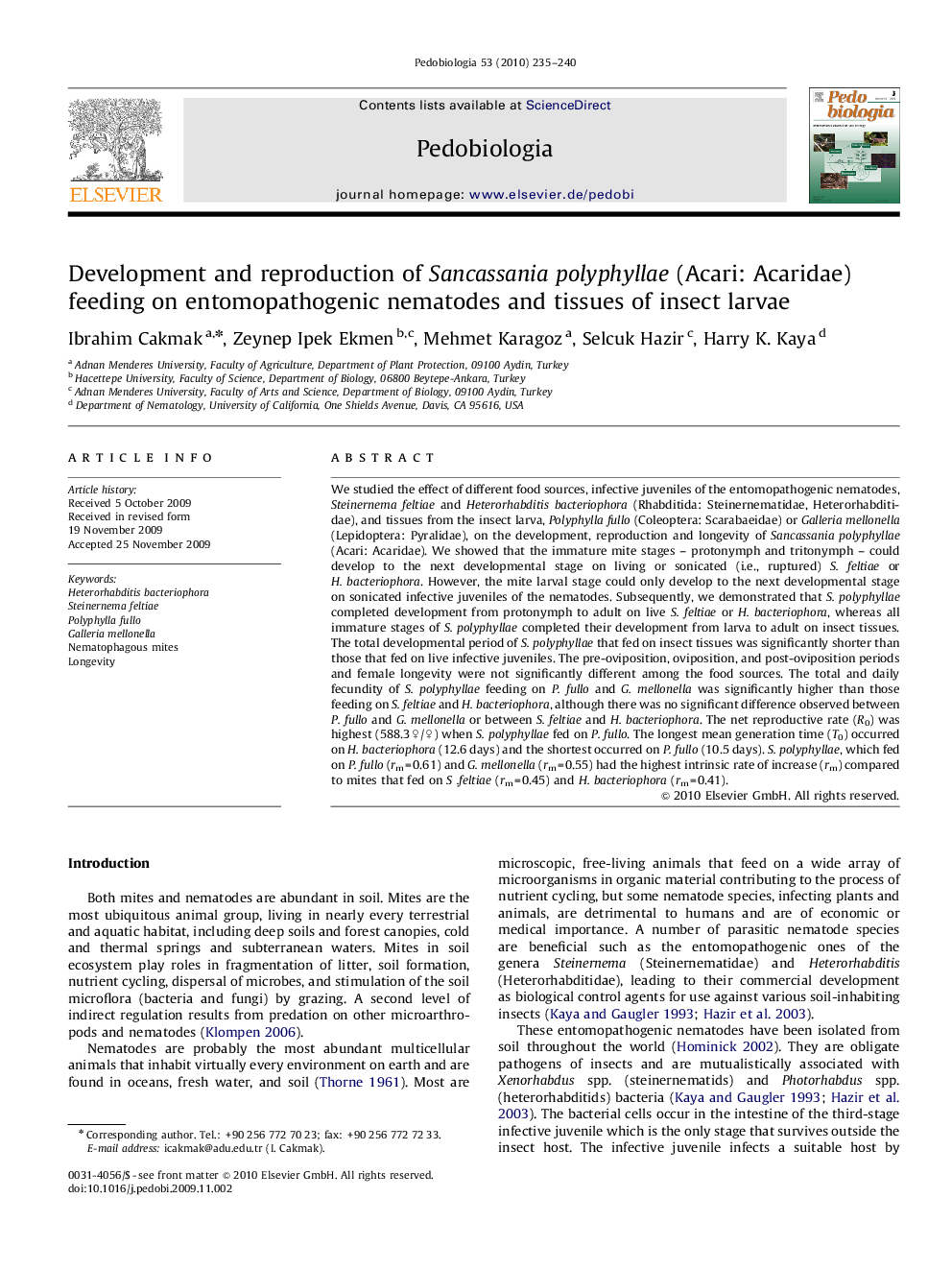| کد مقاله | کد نشریه | سال انتشار | مقاله انگلیسی | نسخه تمام متن |
|---|---|---|---|---|
| 2061509 | 1076496 | 2010 | 6 صفحه PDF | دانلود رایگان |

We studied the effect of different food sources, infective juveniles of the entomopathogenic nematodes, Steinernema feltiae and Heterorhabditis bacteriophora (Rhabditida: Steinernematidae, Heterorhabditidae), and tissues from the insect larva, Polyphylla fullo (Coleoptera: Scarabaeidae) or Galleria mellonella (Lepidoptera: Pyralidae), on the development, reproduction and longevity of Sancassania polyphyllae (Acari: Acaridae). We showed that the immature mite stages – protonymph and tritonymph – could develop to the next developmental stage on living or sonicated (i.e., ruptured) S. feltiae or H. bacteriophora. However, the mite larval stage could only develop to the next developmental stage on sonicated infective juveniles of the nematodes. Subsequently, we demonstrated that S. polyphyllae completed development from protonymph to adult on live S. feltiae or H. bacteriophora, whereas all immature stages of S. polyphyllae completed their development from larva to adult on insect tissues. The total developmental period of S. polyphyllae that fed on insect tissues was significantly shorter than those that fed on live infective juveniles. The pre-oviposition, oviposition, and post-oviposition periods and female longevity were not significantly different among the food sources. The total and daily fecundity of S. polyphyllae feeding on P. fullo and G. mellonella was significantly higher than those feeding on S. feltiae and H. bacteriophora, although there was no significant difference observed between P. fullo and G. mellonella or between S. feltiae and H. bacteriophora. The net reproductive rate (R0) was highest (588.3♀/♀) when S. polyphyllae fed on P. fullo. The longest mean generation time (T0) occurred on H. bacteriophora (12.6 days) and the shortest occurred on P. fullo (10.5 days). S. polyphyllae, which fed on P. fullo (rm=0.61) and G. mellonella (rm=0.55) had the highest intrinsic rate of increase (rm) compared to mites that fed on S .feltiae (rm=0.45) and H. bacteriophora (rm=0.41).
Journal: Pedobiologia - Volume 53, Issue 4, 10 July 2010, Pages 235–240